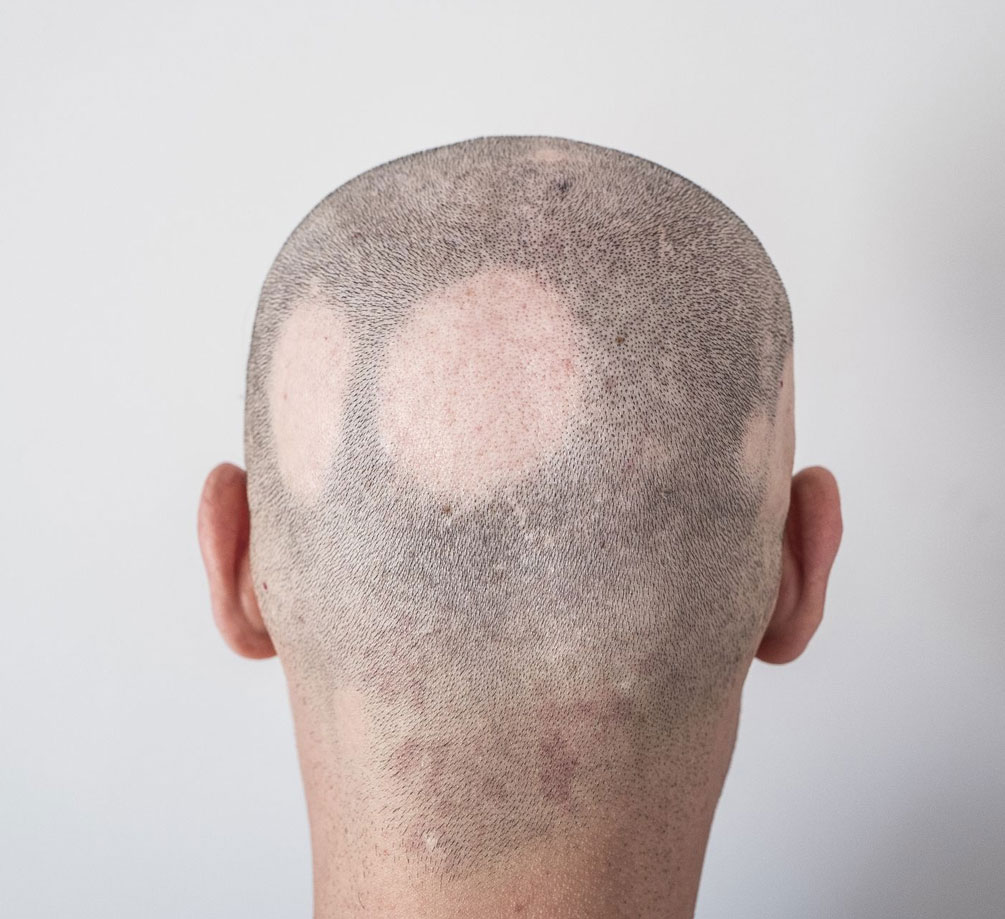Alopecia Areata
Alopecia areata is a common autoimmune disorder that commonly results in unpredictable hair loss. It affects 2% of Americans (roughly 6.5 million people) and can affect anyone regardless of age and gender.
What is alopecia areata?
Alopecia areata is "a common condition of undetermined etiology characterized by circumscribed, nonscarring, usually asymmetric areas of baldness on the scalp, eyebrows, and bearded portion of the face.
In the majority of cases, hair falls out in small patches around the size of a quarter. For most people, the hair loss is nothing more than a few patches, though in some cases it can be more extreme. Sometimes it can lead to the complete loss of hair on the scalp (alopecia totalis) or in extreme cases the entire body (alopecia universalis).
Alopecia areata is considered to be an autoimmune disease, where the immune system mistakenly targets the body instead of harmful foreign invaders such as bacteria.
In the case of alopecia areata, the immune system attacks the hair follicles which leads to hair loss.
What causes alopecia areata?
The disease comes into a body when white blood cells attack the cells in hair follicles, causing them to shrink and dramitically slow down hair production.
It can not be known precisely what causes the body's immune system to target hair follicles in this way. While scientists are unsure why these changes occur, it is believed that there is a genetic reason behind the condition. If a person has a close family member with the disease, their risk of developing alopecia areata is slightly higher. One in five people with the disease has a family member who has also developed it.
Other research has found that many people with a family history of alopecia areata also have a personal or family history of other autoimmune disorders, such as Down syndrome or atopy.
Despite what many people say, there is very little scientific evidence to support the view that alopecia areata is caused by stress. Extreme cases of stress could potentially trigger alopecia areata, but most recent research points toward a genetic cause.
Signs and symptoms
The most prominent symptom of alopecia areata is the patchy hair loss. Coin-sized patches of hair begin to fall out, mainly from the scalp, but any hair-bearing site such as the beard and eyelashes can also experience the hair loss. The loss of hair can be sudden, developing in just a few days. The hair follicles are not destroyed and so hair can re-grow if the inflammation of the follicles subsides.
People who experience just a few patches of hair loss, often have a spontaneous full recovery without any form of treatment.
